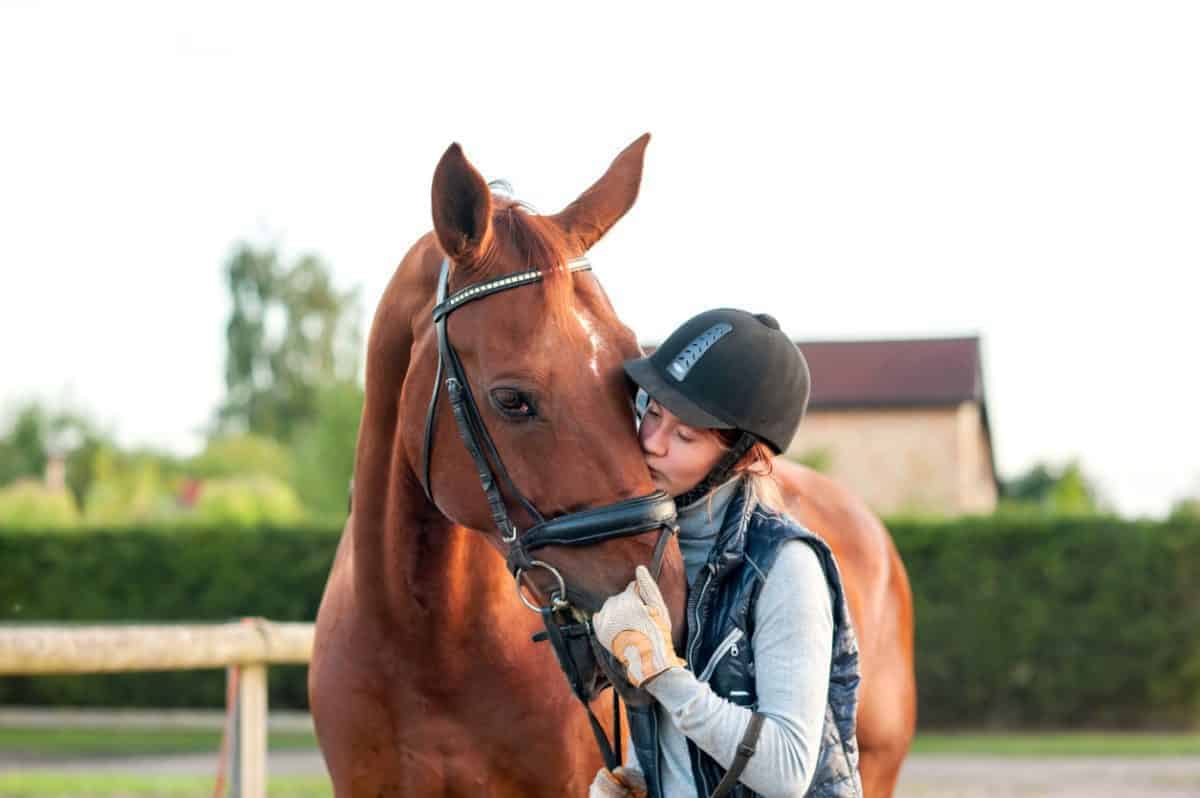What to feed an ex-racehorse

Equine nutritionist Lizzie Drury shares her advice about feeding an ex-racehorse.
“Having been fortunate enough to own and retrain several ex-racehorses, I can honestly say they are amazing horses. Owning an ex-racehorse can lead to a roller coaster of emotions – they give so much pleasure, joy and happiness, and make you feel proud of your relationship together, but the journey can also be challenging, frustrating, and sometimes filled with a feeling of hopelessness. But I certainly have never regretted one moment with any of mine.
For those of you who are first time ex-racehorse owners, the following advice will hopefully help to guide you through the feeding solutions.
If you have recently brought your new ex-racehorse home, you may well have chosen to give him some rest time, to enable him to become accustomed to his new life and future career. Hopefully this will have been a stress-free process, and he will be happy to have chill time in the field and will feel comfortable in his new daily routine. Remember, moving home for a horse will involve not just a change in scenery but a change in field mates, diet and routine. Allow your horse time to settle.
The change in environment is likely to make your new horse feel on his toes, so it is a good idea to initially just allow him ad lib access to plenty of good quality forage. If you intend to keep him stabled for a few days first, then offer him a variety of different fibre sources to help keep him occupied and feel more at ease (such as Hi Fi, Readi Grass, and hay or haylage).
Horses can behave very differently in new surroundings, and since your ex-racehorse would have previously been fed on a high energy diet, I would always suggest you start at the bottom until your horse is completely happy and settled in his new home. This will help to avoid any problems with excitability and inappropriate behaviour.
Cool Mixes or high fibre pencils are a good starting point, and if your horse is lacking condition then start with a conditioning cube or add a high fat supplement to some high fibre cubes, such as a rice bran supplement.
Once your horse is happy and relaxed in his new home and you can start to think about choosing the right feed that will suit his temperament, metabolic rate and the job that you are going to be asking him to do.
When the time comes you can then introduce him to his new training regime. Hopefully he will soon start to learn that ridden work is not all about going in a straight line from A to B at the fastest possible speed, and with any luck he will be learning that he can do a 20m circle without the support of a white rail!
During these early stages, from a feeding perspective, you will probably still find that a low-energy maintenance feed will be suitable to ensure that your horse remains temperamentally sound. Remember that if you are going to be feeding a different brand or make of feed that he has not be fed before, that you introduce it gradually, over a period of 7-10 days.
If you have an ex-racehorse that seems fairly sensible, and you are looking for what I would describe as a little bit more ‘expression’ without silly behaviour and you intend to focus on stamina-type work, then choose feeds that use a variety of energy sources such as digestible fibres, eg soya hulls, beet pulp and alfalfa, a high oil level and some micronized cereals. These performance-based feeds have a lower inclusion of oats compared to a typical performance feed but provides just enough fast release energy to give the lift and presence while digestible fibres and oils provide substantial amounts of slow release energy to support stamina based activity.
If, on the other hand, you have an excitable ex-racehorse that will be working hard and therefore requires a higher energy intake but one that will also help to keep him calm, then cereal-free performance feeds such as Saracen Re-Leve or Dodson & Horrell’s ERS Pellets are suitable. These diets are low in sugar and starch so do not exaggerate an excitable temperament but provide plenty of slow release energy to support high levels of work.
Always make sure you are feeding enough of your chosen diet. I always recommend that you start out by weighing your feed scoops. Not only is feeding the correct amount important for managing body condition score and performance, but it ensures that adequate levels of quality protein for cell renewal, tissue and muscle repair are provided and vitamins and minerals to maintain health and well being.
Feeding the ex racehorse is often a challenging proposition. The rules are not hard and fast and often require an inventive and flexible mind. Vets and nutritionists can offer valuable nuggets of advice for those tackling the reconditioning of off the track Thoroughbreds so never be afraid to ask for help and advice.”
Lizzie






